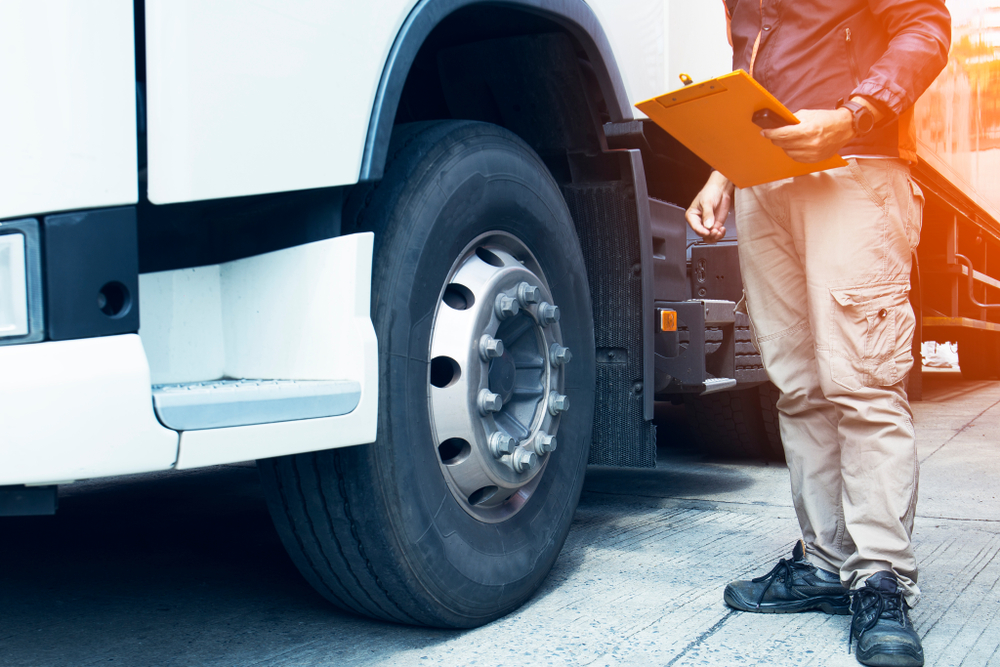Evaluate the tread depth of your tires to make sure you have enough traction to grip the road. The penny test is a simple way to do this. Just place a penny upside down in your tread. If you can see the top of Lincoln’s head, it may be time for new tires.
Use a tire pressure gauge to make sure your tires are properly inflated and then fill your tires with air as needed. To check your pressure, remove the valve stem cap, press the gauge head evenly onto the valve stem, use firm pressure so that the hissing sound stops. Remove the gauge and read the pressure. Compare this to your vehicle’s recommended inflation pressure. Always check your tires while they are cold (after sitting for at least 3 hours or before you’ve driven 1 mile at moderate speed).
Never bleed pressure from a hot tire.
In addition to tread depth and inflation pressure, you should also inspect your tires for any damage or conditions that would warrant their replacement. Look at the tread and sidewalls for any cuts, scrapes, punctures, bulges, bumps or cracks. If you see anything suspicious, have a tire service professional take a closer look.
You also want to keep an eye on your tire’s age. Depending on how much you drive each year, your tire’s tread may last for years but just because the tread is not worn out does not mean that your tires don’t need to be replaced. Bridgestone, following industry standards, recommends that tires be removed from service no more than ten (10) years after the date of manufacture.
To determine your tires age just look at the DOT stamping on the sidewall. At the end of the DOT stamping there will be a 4-digit number. This is the date code. The first two numbers are the week and the last two are the year. For example, 4617 would tell you that the tire was manufactured the 46th week of 2017.
This is the date code. The first two numbers are the week and the last two are the year. For example, 4617 would tell you that the tire was manufactured the 46th week of 2017.
After fuel, oil is your vehicle’s most important fluid, and it gets worn and dirty during its lifecycle. Regularly scheduled oil changes will help keep your engine clean and avoid the potentially engine-damaging effects contaminated oil can inflict. If you want to maximize engine performance, and most importantly, engine life, don’t skimp on your engine’s most vital lubricant. Skipping oil changes, exceeding mileage or going long periods of time before your next oil change can accelerate the wear on the vital parts that keep your car running smoothly, eventually leading to premature engine breakdown.
Want More Road Trip Safety Tips?
See our easy road trip safety tips and learn more about prepping your car for travel.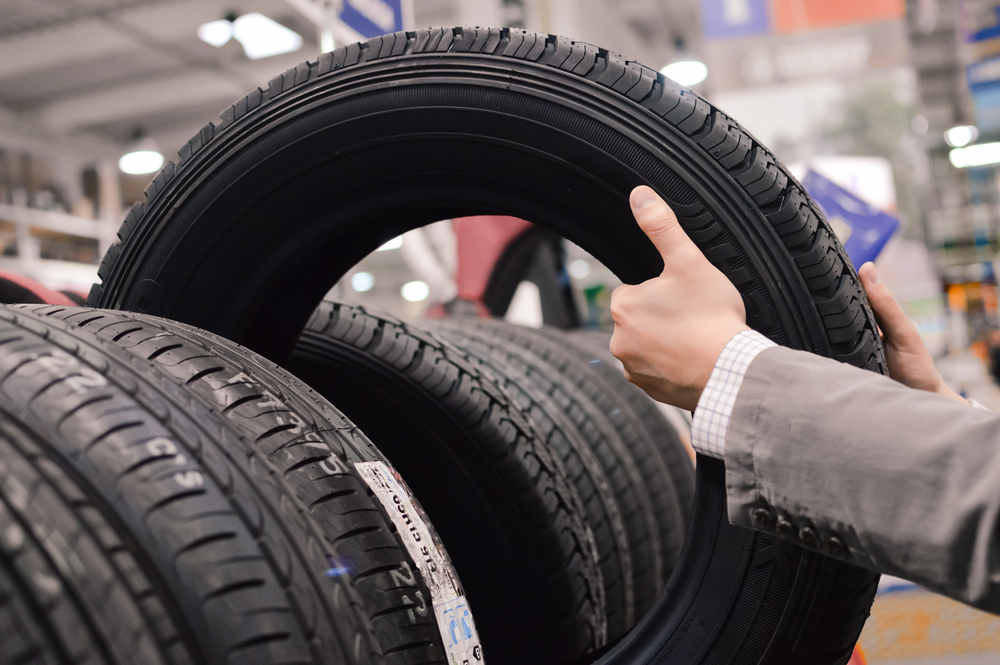
Learn about our mission, our achievements, and our ongoing commitments
Read Our Origin Story
Ask a question, get an answer ASAP!
☰
×
GET A QUOTE
| Save Big on Auto Repairs | Get a Quote |
When you need to go somewhere in your car, usually you grab your car keys and your driver’s license, hop in the driver’s seat, and go. There’s little attention given to your vehicle aside from making sure there’s enough fuel in the tank to get you where you need to go.
As a driver, you’re responsible for the condition of the vehicle you are operating - whether it is your own, a friend or family member’s car, or a rental. Ensuring you are driving a safe vehicle is important not only for your own safety but for other people on the road as well.
Checking your tires is an important part of making sure you are driving a safe vehicle. Every time you prepare to get behind the wheel, you should perform a quick safety check on your vehicle, including an inspection of your tires.
Here’s a simple tire inspection you can perform in less than a minute. You can save yourself the embarrassment of calling a tow truck, or maybe even prevent an accident.
Having a sufficient tread depth is important to ensuring the safest possible driving experience. If your tread is worn out, you may not have enough traction to accelerate or brake safely, especially in slippery or wet conditions.
Step 1: Place a penny between the tread blocks of your tire. Place the penny with Lincoln’s head facing you and upside down in the tread.
If Lincoln’s head is partially or fully covered by the tire tread, your tire has enough tread to drive safely.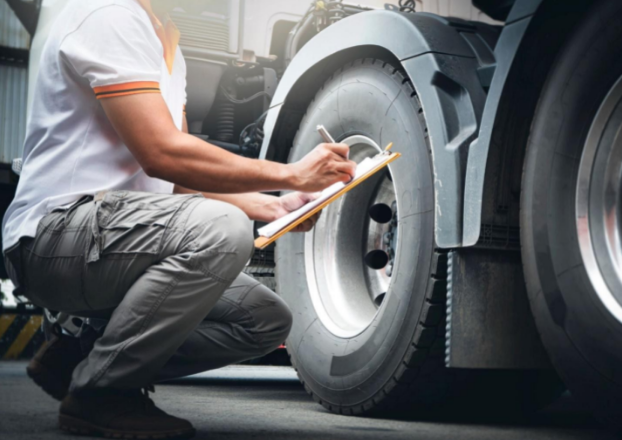 This indicates at least 2/32 of an inch of tread depth remains on your tire.
This indicates at least 2/32 of an inch of tread depth remains on your tire.
If the top of Lincoln’s head is exposed, you need to have your tires replaced.
Step 2: Use the penny to check tread depth around the tire. Check three or more spots around the tire with a penny to make sure the tread is wearing evenly.
Compare the tread depths to determine if they appear the same.
Step 3: Measure two or three spots across the tread contact patch of your tire. Uneven wear can occur either around the tire or across the contact patch.
Step 4: Check all four tires in the same fashion. Use the penny to gauge the tread depth and wear on the remaining tires.
Step 5: Note any inconsistencies in tread depth on each tire.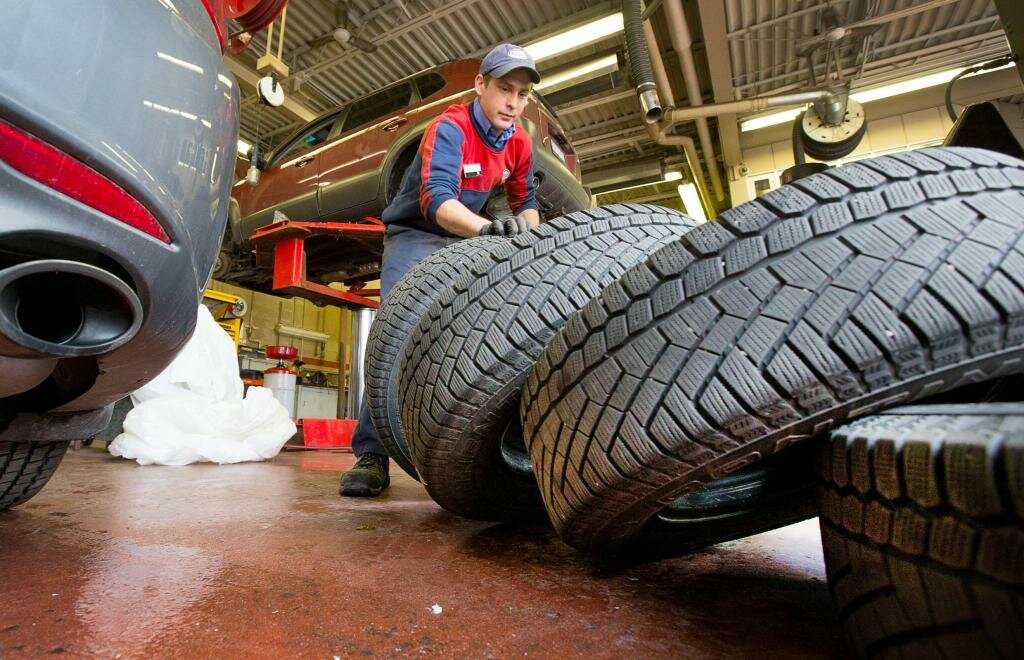 This can indicate a need to have a wheel alignment performed, a suspension or steering repair diagnosed and completed, or a tire balance issue.
This can indicate a need to have a wheel alignment performed, a suspension or steering repair diagnosed and completed, or a tire balance issue.
Step 6: Note any inconsistent measurements between all four of your tires. This can help a mechanic determine the location of a problem.
It can also simply indicate the need to perform a tire rotation.
When you have performed a tire safety check a few times, it will only take a few seconds per tire to check tread depth and make sure your tires are wearing evenly.
Step 7: Check for exposed cords on your tire. Visually look for metal or fabric strands sticking out of your tire.
If you can see the metal or fabric strands used to reinforce the inner part of your tire, you need to have your tires replaced immediately.
Cracking occurs on tires when the rubber begins to degrade. It’s common to see fine cracks forming either between the tread blocks or on the sidewalls, but it should never expose the cords or leak air.
Step 1: Look at the area between the tread blocks to check for cracking. You may find fine cracks or wide cracks.
If there are fine cracks, it’s a normal part of a tire aging, but they should be monitored regularly to prevent encountering a dangerous driving situation.
If there are wide cracks where you can see the steel belts or woven fabric, your tire is not safe to drive on.
Step 2: Check the sidewall for cracking. Again, you may see some fine cracks here.
Like the area between the tread blocks, minor cracking is normal due to weathering but cracks exposing inner tire layers are a serious condition requiring tire replacement.
Step 3: Check for tread separation. On tires with degrading rubber, the tread can separate from the body of the tire.
You can see this as large cracks forming at the join between the sidewall and the tread section.
If minor cracking is present on only a few tread sections, you can safely operate your vehicle but should keep an eye on the cracking.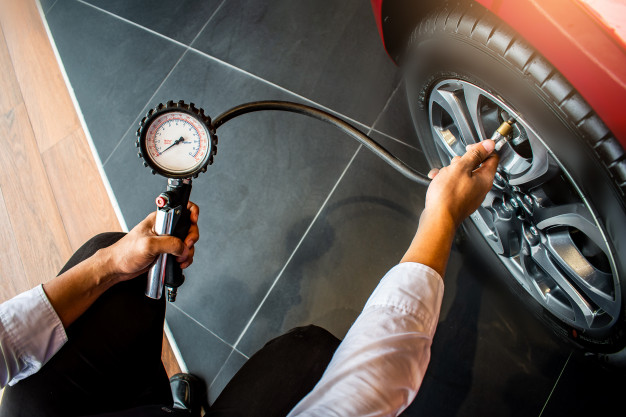
If the crack is wide enough to fit the corner of a credit card in, the tire should be replaced immediately. Tire failure can result from operating on such a tire.
Step 1: Visually inspect your tire tread for anything that doesn’t belong. Nails, screws, pieces of metal, and large rocks can be embedded in your tire, puncturing the liner and causing a leak.
Items puncturing the tire may actually leak very slowly because the puncture is plugged with the object, though it still needs to be replaced very soon.
Step 2: Check the sidewall for cuts or protruding objects. Visually check for anything that looks like it doesn’t belong.
Step 3: Look for obvious bulges or bumps on your tire. Look for egg-sized lumps that feel softer than the rest of the tire when pressed.
Check for any bulges on the tire tread section. These never belong.
These never belong.
Bulges or lumps indicate tire separation where air has entered between the rubber layers in the tire. Though it may not leak immediately, it is unsafe to operate your car with a tire separation.
Ensuring you have the proper pressure in your tires not only ensures you have a smooth ride and handling and optimum fuel economy but also provides the best traction possible. Tires that are under-inflated or over-inflated can feel loose when steering and will have an increased stopping distance in panic braking situations.
Step 1: Find the proper tire pressure for your vehicle. Locate the proper tire pressure for your vehicle in your owner’s manual specifications section or on the driver’s door pillar placard.
After checking your tire pressure a few times, you’ll recall the right pressure by memory.
Step 2: Check the tire pressure at each wheel with a tire pressure gauge. A few different styles of tire pressure gauges include a stick gauge, a dial gauge, and a digital gauge.
Remove the valve stem cap from the valve stem by turning it counterclockwise. Press the tire pressure gauge squarely against the valve stem to get a pressure reading.
If there is hissing from the valve stem as air leaks out, adjust the tire pressure gauge more squarely on the valve stem to seal it off. Check the pressure reading on the gauge and compare it to the recommended pressure you found earlier.
Step 3: Adjust the tire pressure as needed. Use an air compressor or simply let air out.
Inflate the tires with an air compressor if the pressure is too low. Let air out of the tire by pressing on the valve stem needle if the pressure is too high.
After you follow these steps and repeat the tire check a few times, it should become second nature and you’ll easily remember how to do the inspection.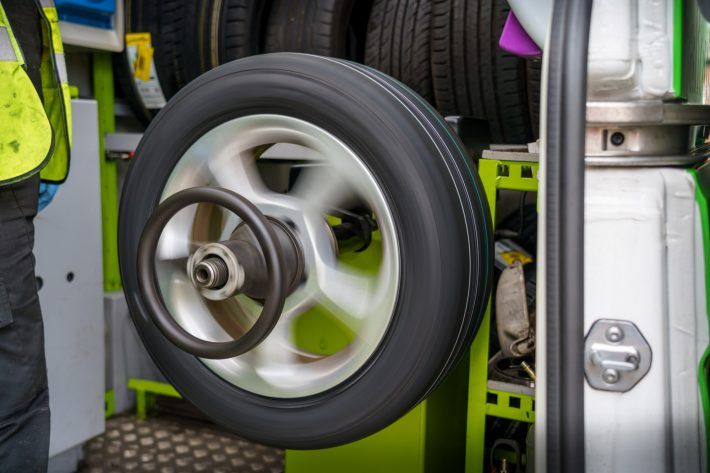 Ideally, you should perform a visual tire safety check every time you drive your vehicle. If you don’t perform a tire safety check every time you drive your car, perform it at least every time you fuel up your car. If you find that your tires need service due to any of the problems mentioned above, one of YourMechanic’s certified mechanics can conveniently come to your home or office to perform any service you need.
Ideally, you should perform a visual tire safety check every time you drive your vehicle. If you don’t perform a tire safety check every time you drive your car, perform it at least every time you fuel up your car. If you find that your tires need service due to any of the problems mentioned above, one of YourMechanic’s certified mechanics can conveniently come to your home or office to perform any service you need.
maintenance
Tires
The statements expressed above are only for informational purposes and should be independently verified. Please see our terms of service for more details
4.2 Average Rating
Service Hours
7 AM - 9 PM
7 days a week
Phone Number
1 (855) 347-2779
Phone Hours
Mon - Fri / 6 AM - 5 PM PST
Sat - Sun / 7 AM - 4 PM PST
Address
We come to you at no extra charge
Guarantee
12-month/12,000-mile warranty
Our certified mobile mechanics perform over 600 services, including diagnostics, brakes, oil changes, scheduled mileage maintenances, and will come to you with all necessary parts and tools.
Get a fair & transparent quote instantly before booking.
Earn up to
$70/hr
Apply Now
Our certified mobile mechanics make house calls in over 2,000 U.S. cities. Fast, free online quotes for your car repair.
GET A QUOTE
GET A QUOTE
Understanding Jeep Oil Change Indicator Lights
Car symbols, or dashboard lights, are a car service reminder. The Jeep Oil Change Indicator lets you know when and what service your car needs.
Understanding the Chrysler Oil Change Indicator and Service Indicator Lights
Car symbols, or dashboard lights, are a car service reminder. The Chrysler Oil Change Indicator lets you know when and what service your car needs.
Understanding Land Rover Service Indicator Lights
Car symbols, or dashboard lights, are a car service reminder.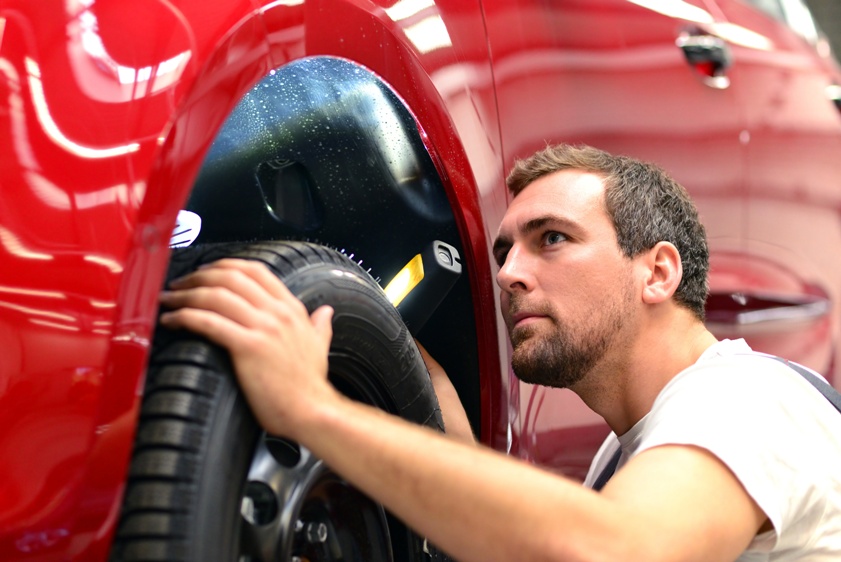 The Land Rover mileage-based system indicates when and what service your car needs.
The Land Rover mileage-based system indicates when and what service your car needs.
My truck shakes when I hit the gas
This issue is most commonly caused by the driveline shaft's slip-yoke and splines. It is caused by the two piece driveshaft slip joint binding up when the two shafts slide in and out of each other. This will mainly occur...
Tire has slow leak
Hello. If your tire has a slow leak, this is likely due to a small hole being in it. It is very common for people to drive over a nail, screw, or road debris. When the object is stuck in...
I have gotten my ball joints replaced and a new spindle and my wheel still keep coming off the ball joint keep coming apart
Hi there. Something is apparently being overlooked, concerning the lower ball joint replacement (https://www.yourmechanic.com/services/ball-joint-front-replacement). The lower part of the ball joint is inserted into the control arm (retained by a circular clip) and the upper part is inserted into the.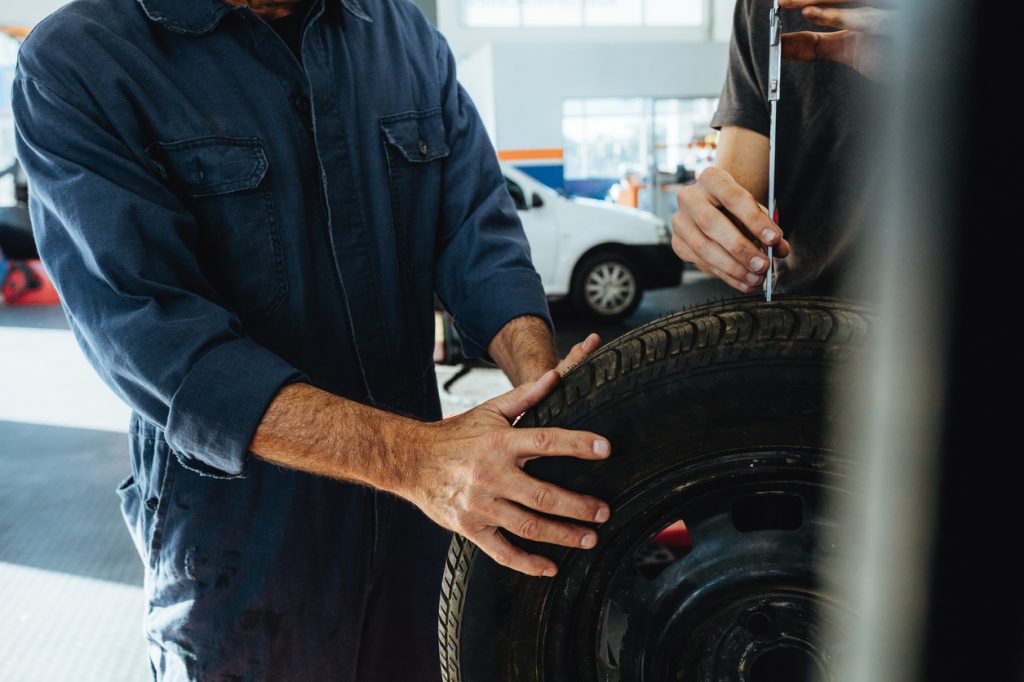 ..
..
Maintenance
Estimates
Services
Our service team is available 7 days a week, Monday - Friday from 6 AM to 5 PM PST, Saturday - Sunday 7 AM - 4 PM PST.
1 (855) 347-2779 · [email protected]
Read FAQ
GET A QUOTE
We have already written how to check the geometry of the body, generator, ignition system, battery, engine, running gear when inspecting a used car. In this article we will tell you how to check the tires when buying a used car.
Some experts say that using used tires is like playing Russian roulette - you only have to rely on luck. And to make the case really happy, you should check the wheels as carefully as possible.
Tires are a guarantee of safety on the road.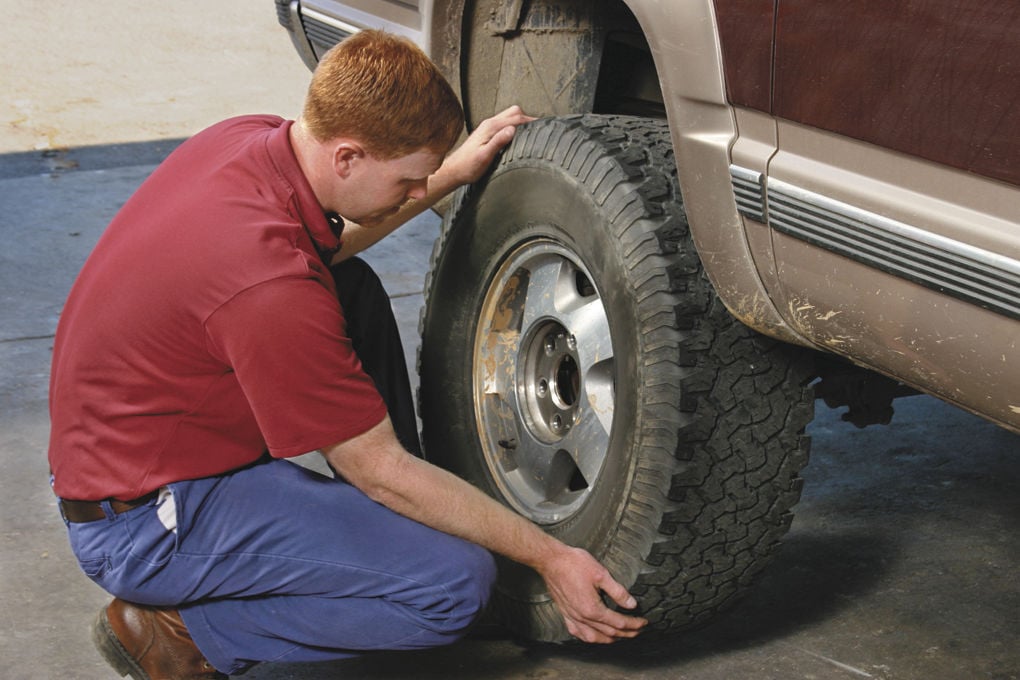 When inspecting a car and used tires, check the following:
When inspecting a car and used tires, check the following:
Each of the parameters is important in its own way, and therefore ignoring at least one of them can significantly reduce the level of safety on the road.
We recommend checking first. If the tires have served their allotted time, further operation does not seem rational. This is easy to do - the date consists of two digits: the week number and year of issue, applied to the outside of the rubber. If, upon inspection of the machine, it is found that the numbers on each wheel are different, then this indicates a non-simultaneous replacement of the wheels. The reason for the replacement, if the service life has not yet come up, you should ask the seller.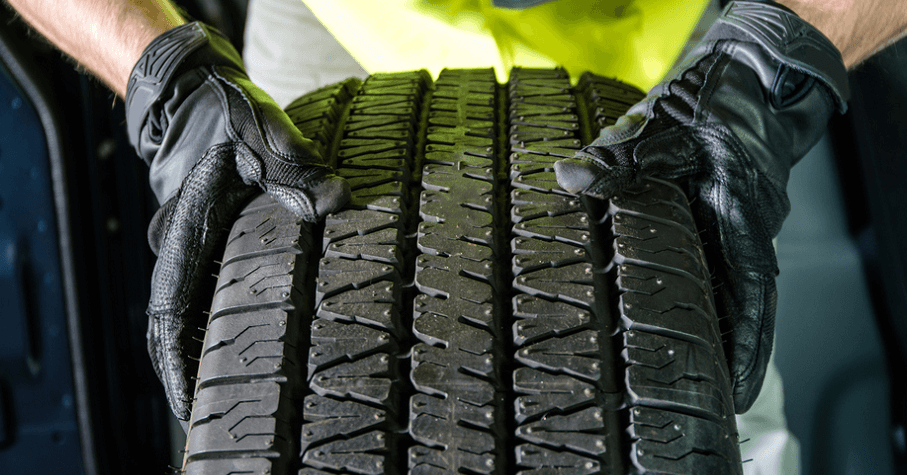
Visual inspection is sufficient to check tire wear. It is important that tire wear (if any) is uniform over the entire circumference of the wheel. Uneven tire wear can be a sign of wheel imbalance, and it also indicates a possible sloppy driving style of the previous owner, which can cause several more problems when operating a car. Increased wear on the outside indicates insufficient tire pressure, which should also be checked before a test drive. The operation of such wheels is fraught with the fact that in corners the rubber will not “hold” the road well. If the center part was more subject to wear, get ready for a decrease in acceleration, handling and braking.
When buying a car, be sure to pay attention to this parameter. Tests show that the permissible tread depth should be at least half of the original - for summer tires it is at least 3 mm (1.6 mm by law, but it would be better to leave a margin), for winter tires - at least 4 mm. It is not difficult to check the depth - in car dealerships you can buy a special probe with marks or use a simple ruler.
It is not difficult to check the depth - in car dealerships you can buy a special probe with marks or use a simple ruler.
When inspecting the tread, it is not superfluous to check for signs of repair from the inside (on a smooth surface). By themselves, the patches on the tread are not critical, but only if their number does not exceed a couple of pieces per wheel, and their size is a third of the width of the pattern. Otherwise, the operation of the "horse" on such wheels should be abandoned. Pay attention to the nature of the patch - the restored tread pattern (the so-called "grooving") can result in a tire rupture.
The tire grips the road surface across the entire tread width. The edges of the tire also have an impact on braking performance. The smaller they become, the less grip the rubber has on the road surface, and therefore the risk of driving on wet or slippery surfaces increases. A worn leading edge indicates problems with the car's suspension, which is also worth paying attention to. You can check this part of the tread "by touch" - the problem is present if the teeth on the tread edges differ in sharpness.
You can check this part of the tread "by touch" - the problem is present if the teeth on the tread edges differ in sharpness.
Tire micro cracks can occur even under conditions of minimal rubber wear and careful storage. The average service life of rubber is 5 years, but, as a rule, by the end of the term, the tire naturally becomes unusable. In the presence of small cracks, it is not recommended to exceed the speed of more than 80 kilometers per hour, otherwise the chances of complete tire wear increase rapidly. Deep cracks appear with a large degree of delamination of the tire. The use of such tires is highly discouraged.
Defects in the form of cuts and repair marks are a clear signal to stay away from the selected used rubber. As a rule, tire side cuts are dangerous due to the fact that the repair of such defects is extremely difficult and not gives a further guarantee of the quality of rubber operation.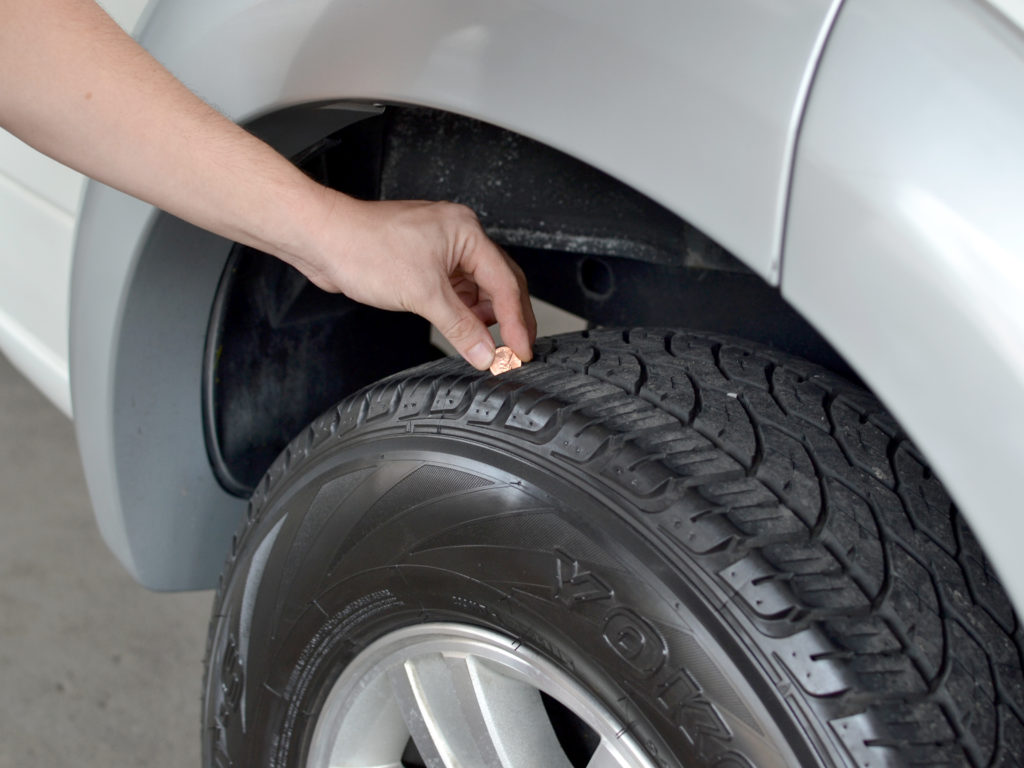 But, in addition, it is necessary to check and make sure that there are no hidden damages. Deformation of the tire carcass in the form of dents and creases can be the result of driving or parking on a flat tire, as well as a strong impact. The end of the service life in this case may come earlier than expected.
But, in addition, it is necessary to check and make sure that there are no hidden damages. Deformation of the tire carcass in the form of dents and creases can be the result of driving or parking on a flat tire, as well as a strong impact. The end of the service life in this case may come earlier than expected.
The internal delamination of the tire is extremely difficult to detect. A warning can be various types of swelling on the inside of the tire. Visible breaks in the layer are also possible. Check the degree of puncture of the tire - when pressed with two thumbs, the tire should not deform much, but will quickly return to its original shape.
These tire and wheel test parameters apply to both summer and winter tires. But, in the cold season, when the car is “reshod” in winter tires, some other factors should be taken into account.
In winter, buying a car with winter tires is considered correct, but another situation is possible, so do not neglect the inspection of the wheels.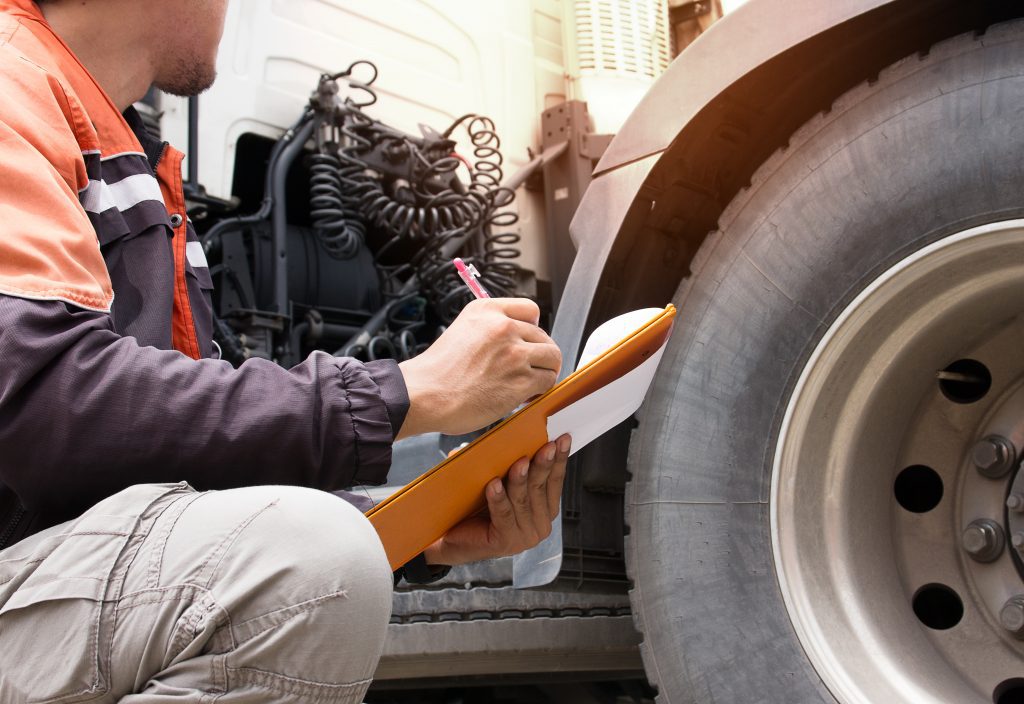 First of all, you should check what the car is “shod” in - it can be idle for a long time, especially if the transaction takes place in the car market. Winter wheels are divided into two types: studded and friction.
First of all, you should check what the car is “shod” in - it can be idle for a long time, especially if the transaction takes place in the car market. Winter wheels are divided into two types: studded and friction.
Equally important is the tread depth. For 100%, it is customary to take the tread depth of new tires, 0% - unusable, respectively. The minimum permitted tread depth for winter tires is 4 mm, otherwise 0%. From the factory, tires are produced with different depths. Keep in mind that if the initial depth reached 8 mm, then 4 mm is not 50% wear, as some sellers say.
A buyer's vigilance will be a guarantee of a good deal. Bad tires in the general good condition of the car is not always a reason to refuse a purchase. If the wear is natural and even, and also corresponds to the average life of tires, the option of purchasing a car is worth considering. You can always eventually replace the rubber with one that will inspire confidence.
In order to avoid doubts about the history of the purchased car during the inspection, check the history of the car using the Autocode online service. To obtain a complete report, only the VIN, chassis number or state number of the vehicle of interest is required.
By driving in unique car numbers, you will receive the following data:
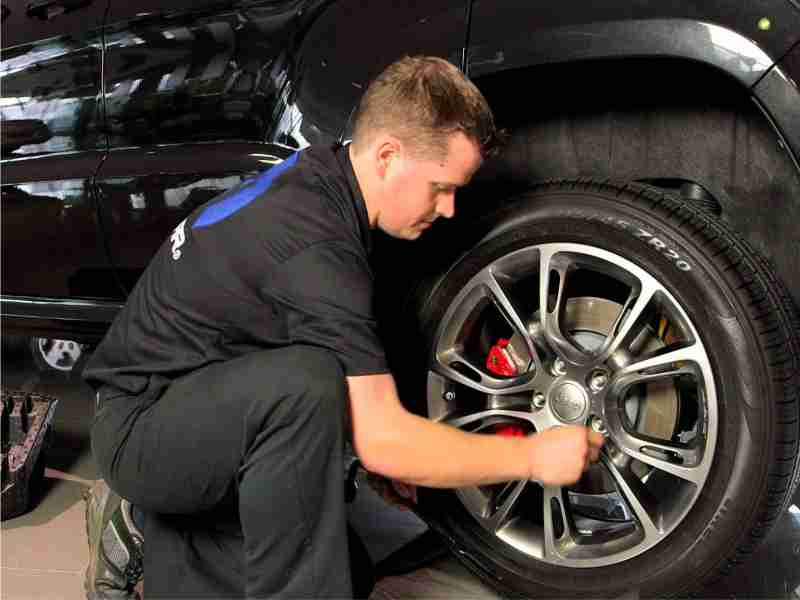
If you are a professional car dealer, you can also use the Autocode Profi service of unlimited car checks. Autocode Profi allows you to quickly check a large number of cars, add comments to reports, create your own lists of liquid vehicles, quickly compare options and store vehicle data in an orderly manner.
Tire wear or other negative factors may be hidden by the seller. So that they do not subsequently lead to problems in other parts of the machine, order an on-site Autocode check. The specialist will arrive at the place at any time and conduct a professional inspection of the vehicle. Checking the machine through Autocode will help to verify the correctness of your assumptions or refute them.
If there are no serious problems in the history and technical part of the car and you decide to buy, take the final step - enter the seller's passport data through the car owner verification service. This service will show whether he has problems with the law, whether his passport is valid, whether there are debts and enforcement proceedings. If the audit finds serious problems, it is better to refuse the transaction. View sample report
If the audit finds serious problems, it is better to refuse the transaction. View sample report
It's no secret that during operation a set of tires is subject to wear and over time it has to be replaced with a new one. But not many people know that tires can already have a tendency to accelerate wear at the acquisition stage. What is the reason for the short life of new wheels?
What should I check when buying new tires?
Below are tips on what to look for and how to proceed when buying new tires. They are pretty simple.
1. Ask about storage conditions
Proper preservation of tires in a warehouse is a guarantee of their long service life. If there is an opportunity to get to the warehouse, be sure to use it. Sometimes this can be done at the time of the final stage of issuing tires to the buyer.
If tires are stored:

Then, in this case, it is better to refuse to purchase them. The thing is that as a result of such storage, microcracks, deformation and damage may appear on the rubber. This is due to the loss of rubber elasticity and the wrong way to preserve tires. If the tires have the listed defects, then it will not last long. Maximum - one or two seasons.
2. You need to look at the date of manufacture
If the wheels were produced more than three years ago at the time of their inspection, then you need to understand that the rubber composition of such tires has already lost some of its useful properties and has lost some of its elasticity. During subsequent operation, insufficient traction and destruction of rubber may be revealed. Although, theoretically, tires can be stored for five to eight years without losing their best qualities.
3. It is necessary to purchase wheels in the center where there is a tire service
In this case, when installing new wheels, hidden defects may be revealed and the seller will not be able to refuse to replace the damaged tire with a new one. In addition, a guarantee is usually given for the work of a tire fitting - within the allotted time, you can come and make a claim regarding the installation of tires.
4. The seller is obliged to issue a check
Sometimes this is taken lightly and the check is thrown away. Under no circumstances should this be done. It is the presence of a check that will help to exchange defective tires for a new one.
5. Wash the tread with your fingers
The rubber should not be too soft. The fingers should not fall inward, but only slightly bend the tread - in this case, we can talk about good elasticity, and hence the retained grip properties.
6.